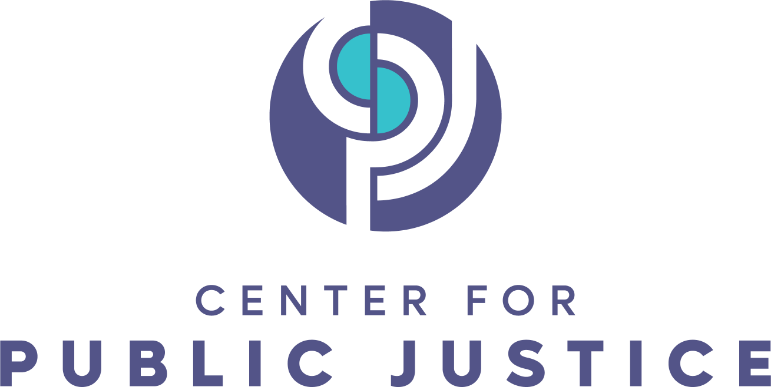
In a quiet but significant victory, the U.S. Supreme Court unanimously ruled that the Catholic Charities Bureau of the Diocese of Superior qualifies for a religious exemption from Wisconsin’s unemployment tax system. In doing so, the Court reaffirmed what is too often forgotten: that religious institutions engaged in mercy and justice work beyond their sanctuaries remain fully religious in identity and purpose.
Catholic Charities Bureau (CCB), the social services arm of the Diocese, had been denied the exemption by Wisconsin’s Department of Workforce Development, which claimed that CCB’s work was “primarily charitable and secular.” Because the agency served people of all faiths—and did not proselytize—the state insisted that it was not operating with a “primarily religious purpose.” The Wisconsin Supreme Court upheld this view in a 4–3 decision.
This narrow definition of religion—that only institutions who proselytize or restrict their service to co-religionists count as religious—amounts to a kind of theological gatekeeping. It punishes religious institutions whose theology compels them to serve the broader public, regardless of belief. And it reflects a failure to grasp the sacramental vision that many faith communities bring to their public witness.
But the U.S. Supreme Court saw this clearly—and rejected Wisconsin’s reasoning. In her opinion for the Court, Justice Sonia Sotomayor made clear that governments cannot distinguish between religious groups based on how they express their beliefs. “There may be hard calls to make in policing that rule,” she wrote, “but this is not one. When government distinguishes among religions based on theological differences in their provision of services, it imposes a denominational preference that must satisfy the highest level of judicial scrutiny.”
Justice Clarence Thomas, in concurrence, emphasized the broader constitutional principle at stake: the First Amendment’s guarantee of church autonomy protects not just houses of worship or acts of private belief, but also the institutional life of faith communities—including their acts of service in the public square: “The First Amendment guarantees to religious institutions broad autonomy to conduct their internal affairs and govern themselves. This guarantee, which we have called the ‘church autonomy doctrine,’ provides that a religious institution is not defined by the corporate entities it chooses to form.” Government, he explained, is not permitted to redefine the religious mission of a church’s ministry simply because it expresses that mission through outward, inclusive care.
A Case Study in the Struggle for Institutional Religious Freedom
The case of Catholic Charities Bureau v. Wisconsin is more than a legal dispute over taxes—it is a mirror of a deeper tension between spiritually rooted institutions and the secularizing tendencies of modern administration. CCB serves the disabled, the elderly, and the economically vulnerable. Its work flows directly from Catholic social teaching, which commands service to the poor not as optional charity, but as sacred obligation.
Yet Wisconsin’s legal standard reduced religion to its most insular expressions—either proselytization or intrafaith service. By this definition, feeding the hungry in Christ’s name, regardless of who they are, is “secular.” That kind of reasoning collapses motivation into method and erases the sacred roots of much of the good that faith-based institutions bring to public life.
The Gospel is proclaimed through housing assistance, hospice care, community mental health services, and meals offered without question. Catholic Charities does not serve because its clients are Catholic. It serves because it is Catholic.
That distinction matters—and not only for Catholics. It applies to Muslim aid organizations inspired by zakat, to Jewish community centers grounded in tikkun olam, to African Methodist Episcopal churches that operate voter registration clinics as acts of prophetic ministry, and to Indigenous spiritual networks stewarding sacred land through nonprofit trusts. All of these are institutional expressions of sacred life.
Wisconsin’s framework privileged narrow doctrinal expressions while excluding religious traditions whose theology calls them outward. That is not neutrality—it is preference. And it violates the core principles of a pluralistic society governed by constitutional integrity.
The Three Ps: A Framework for Protecting Enacted Religious Freedom in Public Life
To preserve and nurture the role of faith-based institutions enacting their religious freedom in civic life, we need a holistic framework—one that recognizes faith-based organizations as essential contributors to a flourishing society. A helpful approach can be found in the “Three Ps”: Public Policy, Organizational Practices, and Public Positioning.
1. Public Policy: Advancing Pluralism and Institutional Freedom
Public policy must reflect a vision of pluralism that affirms the legitimacy of religious institutions in civic life—not in spite of their sacred convictions, but because of them. Poorly designed policies, like Wisconsin’s, force religious organizations into false choices—between fidelity to their sacred mission and access to public infrastructure.
For Catholic Charities, the issue was unemployment insurance. Participation in the Catholic Church’s internal program reflects the Catholic principle of subsidiarity—that local, relational institutions are best equipped to meet human needs. When state policies override these internal arrangements, they don’t simply impose bureaucracy—they dismantle sacred ecosystems.
2. Organizational Practices: Maintaining Mission and Distinctiveness
Faith-based organizations must also cultivate clarity about how their work flows from their theological identity. For Catholic Charities, serving all people is not a neutral stance—it is an expression of Catholic anthropology, a recognition of the divine image in every human being.
Religious organizations must remain anchored in their founding charisms and resist the legal and cultural pressures to become indistinguishable from secular nonprofits. Authentic pluralism depends not on sameness, but on the presence of distinctive, rooted institutions who serve out of conviction. Catholic Charities shows how faith can be expressed inclusively without losing its depth or sacred center.
3. Public Positioning: Naming the Sacred in Civic Life
In an age of skepticism toward religion, especially in public institutions, it is critical that faith-based organizations communicate not just what they do, but why they do it. This means recovering a sacred vocabulary for public witness—not in the language of exclusion or culture war, but in the language of moral purpose, theological meaning, and spiritual accompaniment.
The work of Catholic Charities is not just material assistance. It is a form of sacred service—a lived theology of presence, justice, and love. These acts of care are not simply good deeds; they are liturgies of public life. And telling that story matters.
At the heart of the Catholic Charities case lies a deeper cultural question: What is religious freedom for? If it exists only to protect private belief or Sunday morning worship, it is far too narrow. If it requires institutions to evangelize, exclude, or privatize in order to be recognized as “religious,” it becomes unjust.
Religious freedom must be defined capaciously—so that institutions animated by sacred purpose can operate, serve, and lead in the public square. That means moving beyond rights-talk that fixates solely on individuals. It requires a vision of public justice that centers families, congregations, schools, and ministries as foundational to our civic life.
The Court’s unanimous ruling is not just a legal victory. It is an invitation to recover this fuller vision. It affirms that faith is not only expressed in pews and pulpits—but in clinics, kitchens, classrooms, shelters, and coalitions. That too is sacred ground.
A Decision with Lasting Implications
By upholding Catholic Charities’ right to be recognized as a religious institution even when it serves the broader public, the Supreme Court affirmed a critical truth: religious freedom is not about narrowing faith to doctrine or worship. It is about honoring the institutional forms through which faith is lived and given.
This ruling does not create a new right. It reasserts an old one: that when faith is lived out faithfully and institutionally, it naturally bears fruit in acts of public justice and mercy.
If we allow governments to determine which religious expressions “count,” we risk flattening the soul of civic life. But if we protect the integrity of faith-based institutions—especially when they serve the most vulnerable—we preserve a vision of human flourishing that is not only pluralistic and just, but deeply sacred.
As the living waters of religious freedom continue to flow, may they nourish the institutions, communities, and callings that point us toward something higher—and hold us together in service of the common good.
Chelsea Langston Bombino is a believer in sacred communities, a wife, and a mother. She serves as a program officer with the Fetzer Institute and a fellow with the Center for Public Justice.
Key Takeaways:
- When faith is lived out faithfully and institutionally, it naturally bears fruit in acts of public justice and mercy.
- Religious institutions engaged in mercy and justice work beyond their sanctuaries remain fully religious in identity and purpose.
- Public policy must reflect a vision of pluralism that affirms the legitimacy of religious institutions in civic life—not in spite of their sacred convictions, but because of them.
- Faith-based organizations must . . . cultivate clarity about how their work flows from their theological identity.
- Authentic pluralism depends not on sameness, but on the presence of distinctive, rooted institutions who serve out of conviction.
- It is critical that faith-based organizations communicate not just what they do, but why they do it . . . in the language of moral purpose, theological meaning, and spiritual accompaniment.
- Religious freedom must be defined capaciously—so that institutions animated by sacred purpose can operate, serve, and lead in the public square.



